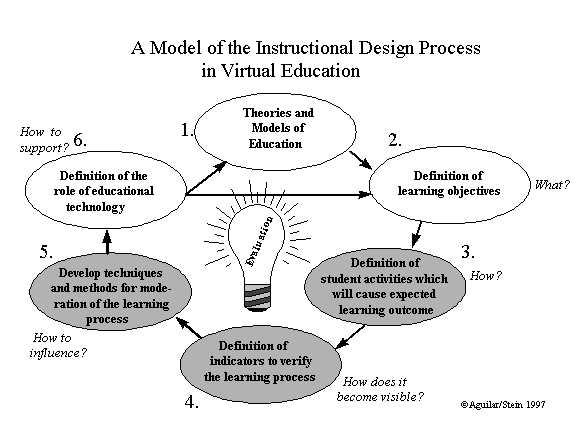

This model (Aguilar/Stein 1997) has three major advantages:
1.Its center is the student activity.
2.It demands the definition of what student behavior the instruction
team wants to
observe.
3. It requires the determination of how the instruction team wants
to moderate the
process if students do not do what they were expected to do.
This means that a cycle of verification and corrective activity is included in the model to improve the learning process.
The steps of the model:
1.First, there has to be an agreement about Theories and Models of Education which are building the basis of the redesign and the learning objectives. We suggest theories about autonomous or independent study, teamwork, network or cooperative learning, engaged and meaningful learning or distributed learning (e.g., Dede 1996).
2. The second step is the Definition of Learning Objectives based on existing curricula and the mission of the educational organization.
3. The instruction team will define Student Activities which are supposed to trigger the expected learning outcome.
4. It is important to establish indicators which will make it possible to verify the ongoing learning process. For example it must be clear, how the wanted student-activity will become visible.
5. The instruction team has to establish in which way it will be possible to influence the learning process of students, techniques and times of influence in the process will be defined.
6. Finally, beside previous considerations, the role and function of educational technology will be defined.
Detected lack of previous knowledge or skills in some students would lead to adaptation of objectives.
Evaluation is part of all the planning and implementation process. At any time the instruction team has to verify the process using the established indicators.
After running the cycle in figure 1 various times, documentation of the redesign and implementation process could mean a contribution to the theory of Virtual Education.